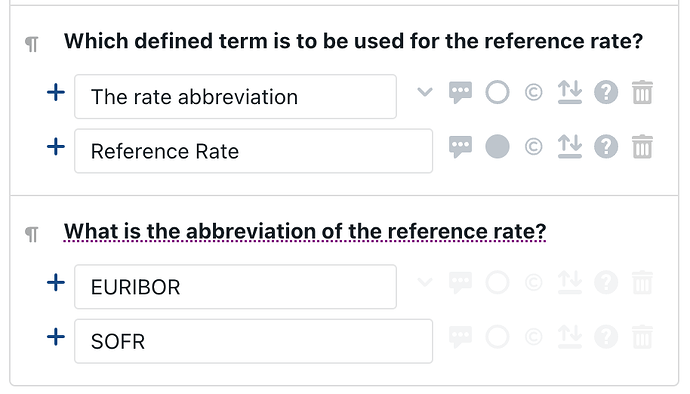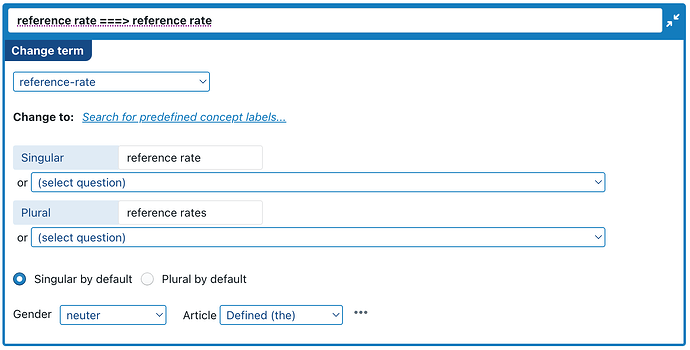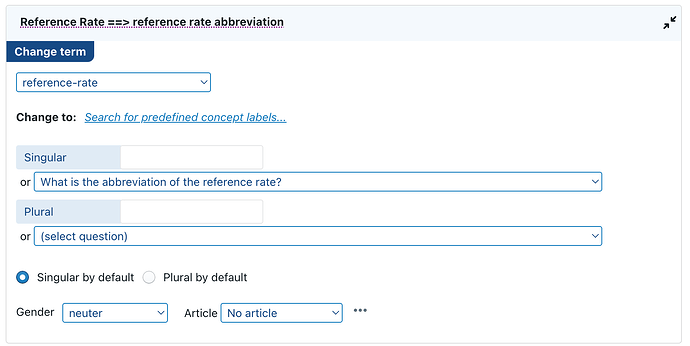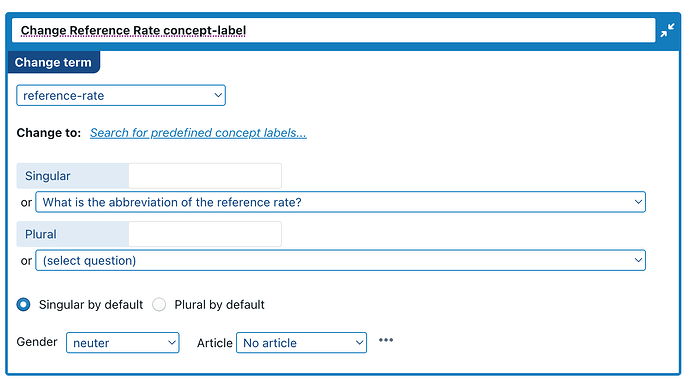Hi Mark,
I’m taking the liberty to share a few tiny pieces of your (impressive!) Q&A, to allow future readers to understand the issue, because this is a subtle issue that many users trip over.
Essentially, you have two questions:
… and three changes.
The first change switches to the default “reference rate” (in singular) / “reference rates” (in plural). Its condition specifies that it should only be active when the answer to the first question is equal to “Reference Rate”. So far so good.
With the second change you want to switch to the abbreviation:
With the third change you allow the user to use his own answer (in addition to EURIBOR/ SOFR):
The problem is that your second and third change refer to the answer of the second question (“What is the abbreviation of the reference rate?”). However, that second question is never shown, because the condition to that second question is set to:
That “The reference rate’s abbreviation” does not exist as a possible answer in your first question (I guess you changed the value of the predefined option of the first question at some point during your experiments). Accordingly, the condition for that second question is never met, so that second question is never shown, so its answer is ignored by the software. As a result, from the software’s perspective, you are asking to change the concept-label of #reference-rate, but it does not known which concept-label to use.
So the short answer is: adapt your condition to the second question, and everything will work.
A few hints, however:
-
For your predefined answers, try to use codes as possible answers (instead of full text fragments), and combine them with labels for each possible answer. Changing the value of a predefined option is fragile, because you have to think about all the conditions that depend on the precise wording of that value. Conversely, you don’t run any risk when you change labels of predefined options at some point in time. It’s a bit similar to why you should use codes within a clause (Using codes instead of text fragments – Help), instead of actual text fragments.
So in your case here, I would have used the following, for example, to “protect” yourself against changes in the future. With these “ugly” capitalised codes, you — or a future colleague — will immediately grasp that those values are not actual text fragments.
- It’s actually not necessary here to have three different changes; one would also have been enough, i.e. only the following one:
with the following condition (I’m using the “code” instead of full-text already):
The reason is that, by default, the software will use the concept label stored with the concept (i.e., “reference rate” and “reference rates”), so there is no need to repeat the standard concept label in a change. You only need to change that concept-label when the user indicates in the answer to the first question that he wants to deviate from that standard.
In such case, you take the answer to the second question as the concept-label. Whether that answer is “EURIBOR” or “SOFR” or even a free-text option does not matter; it is not necessary to create different changes to differentiate here.







